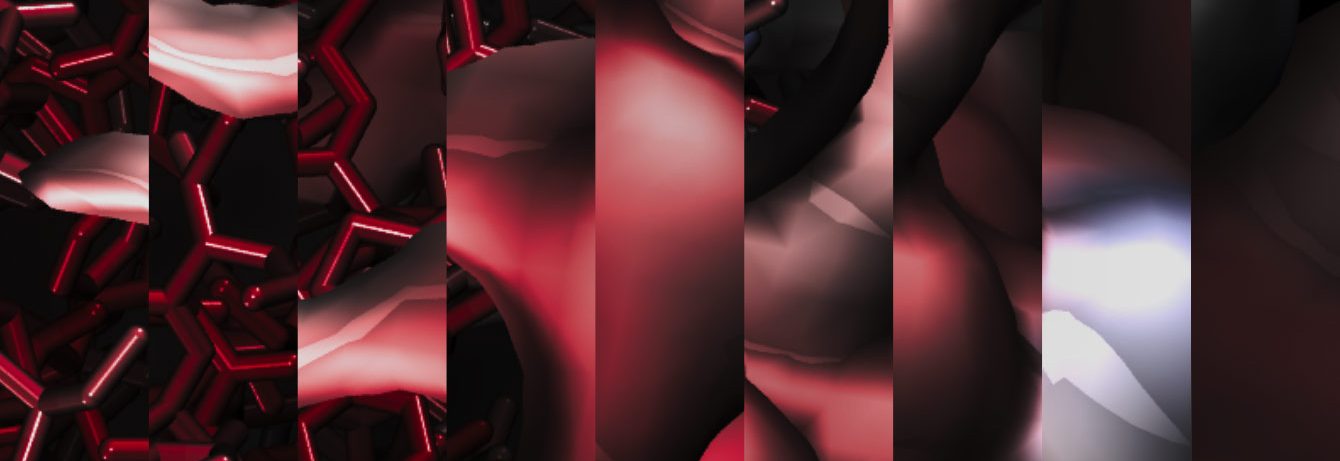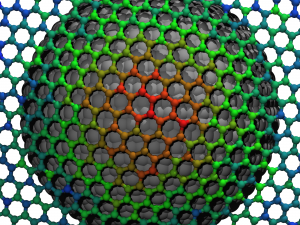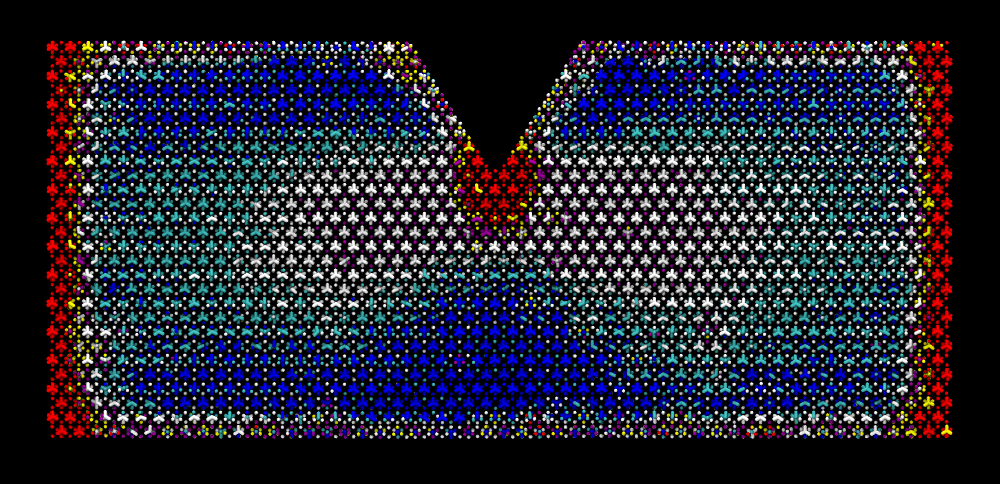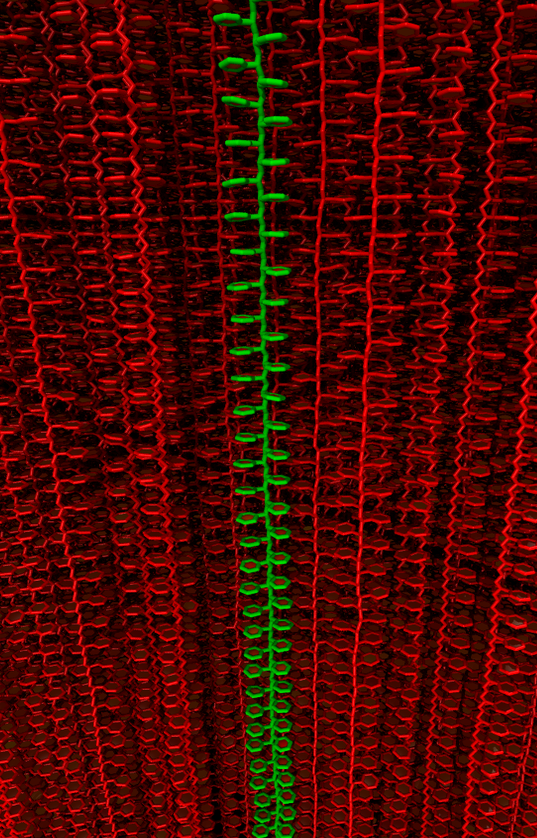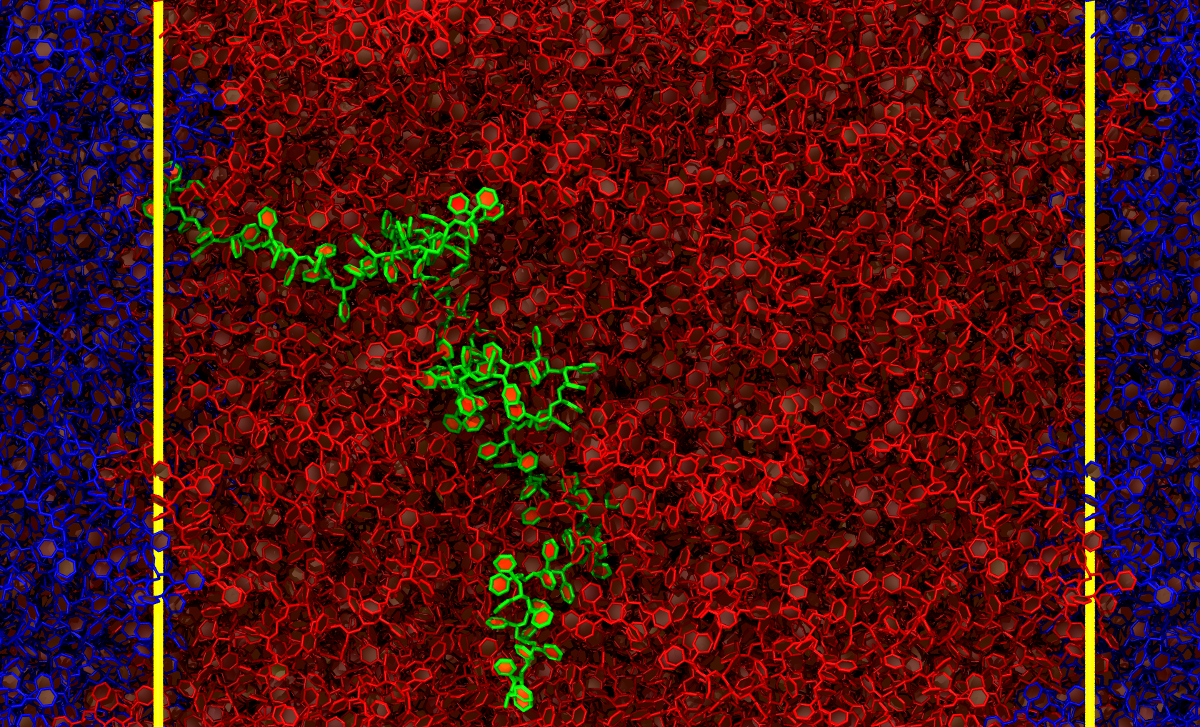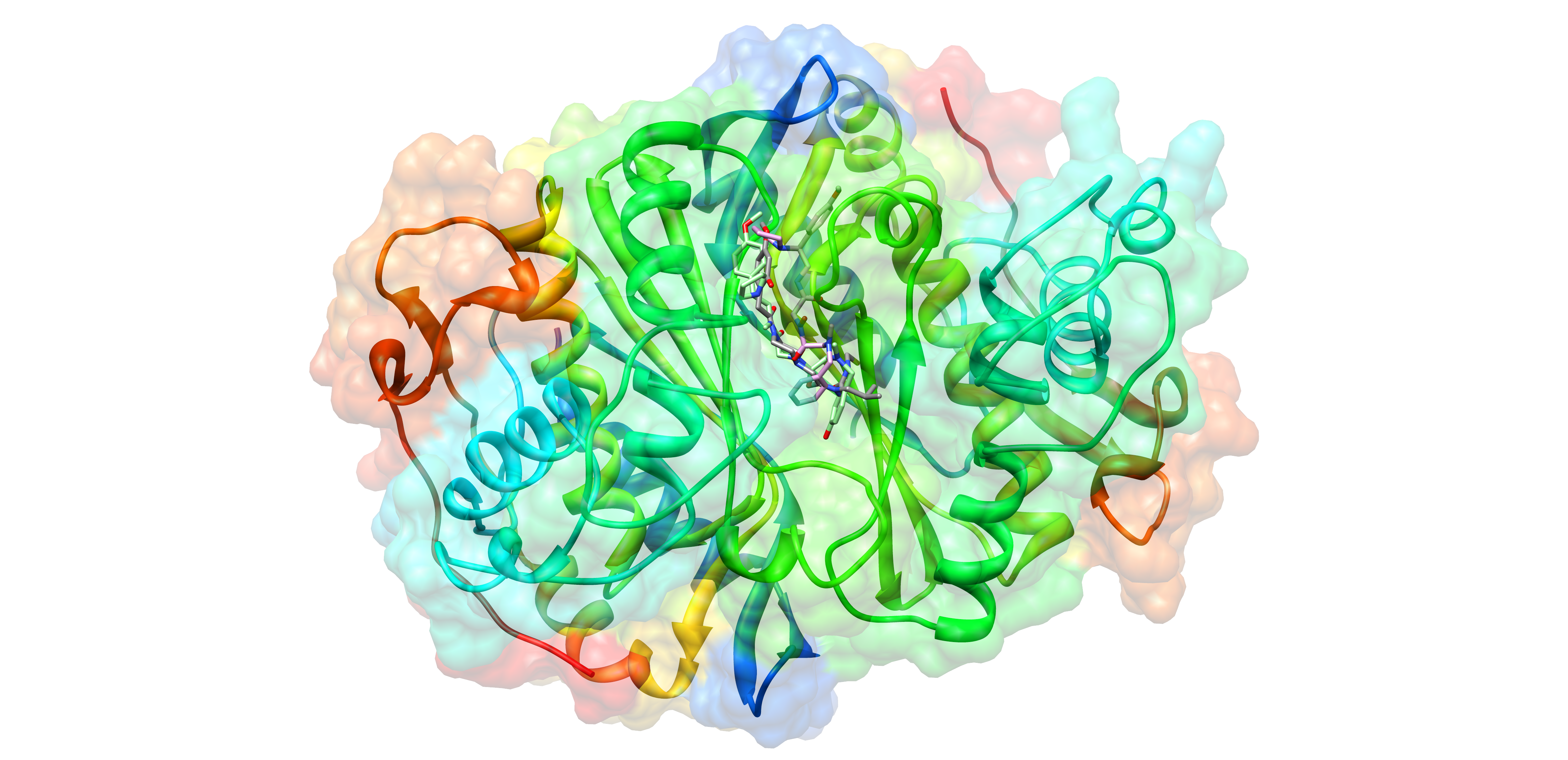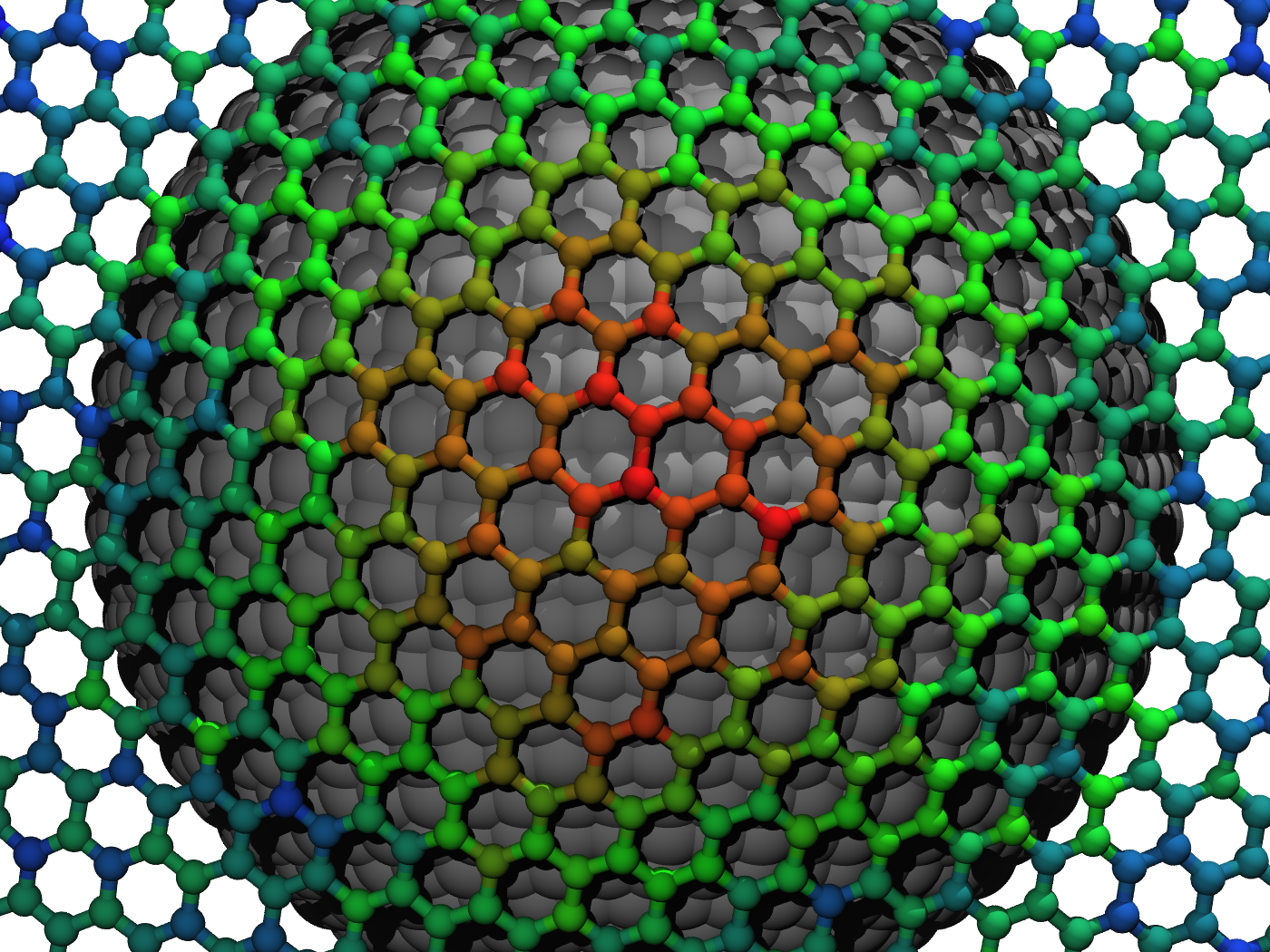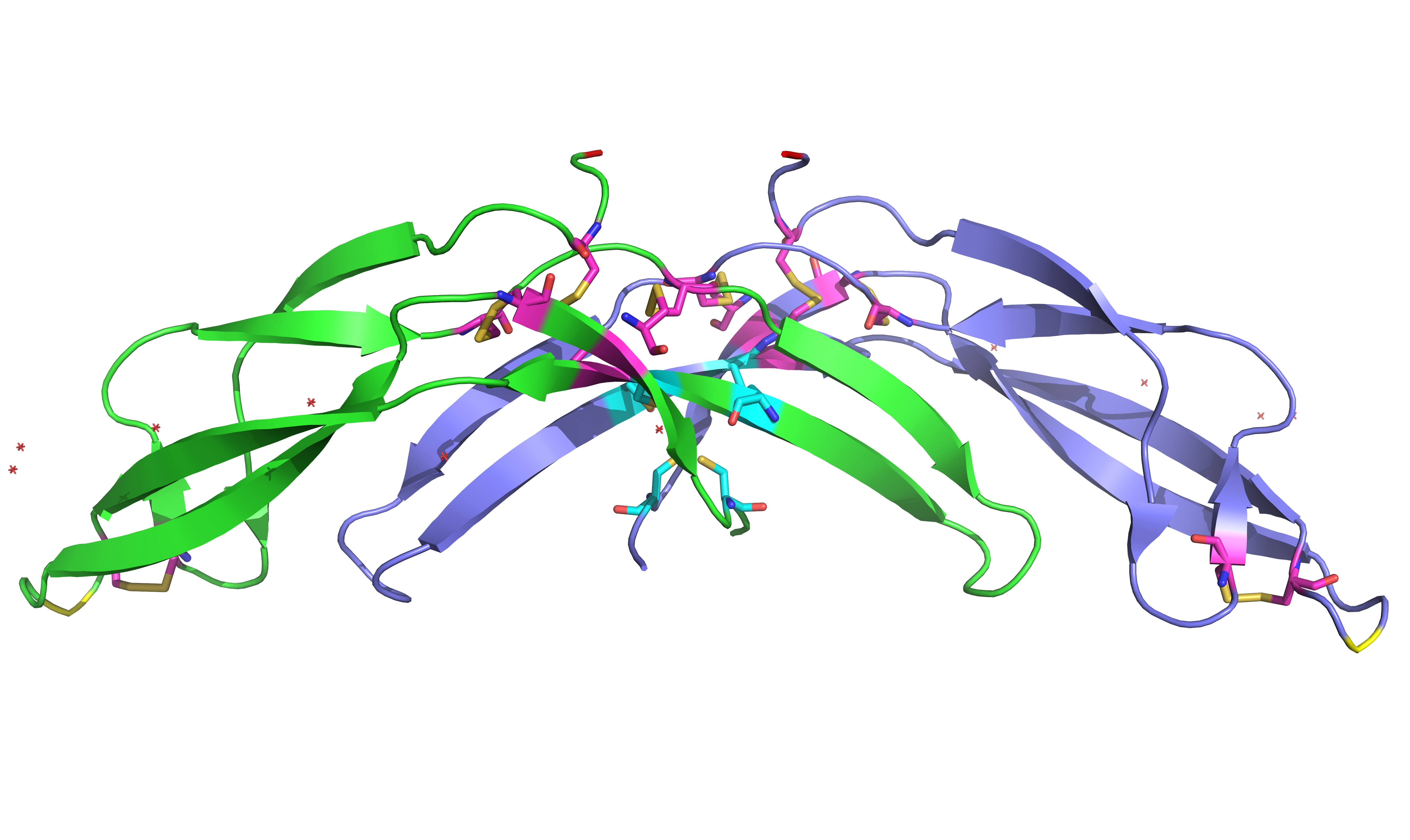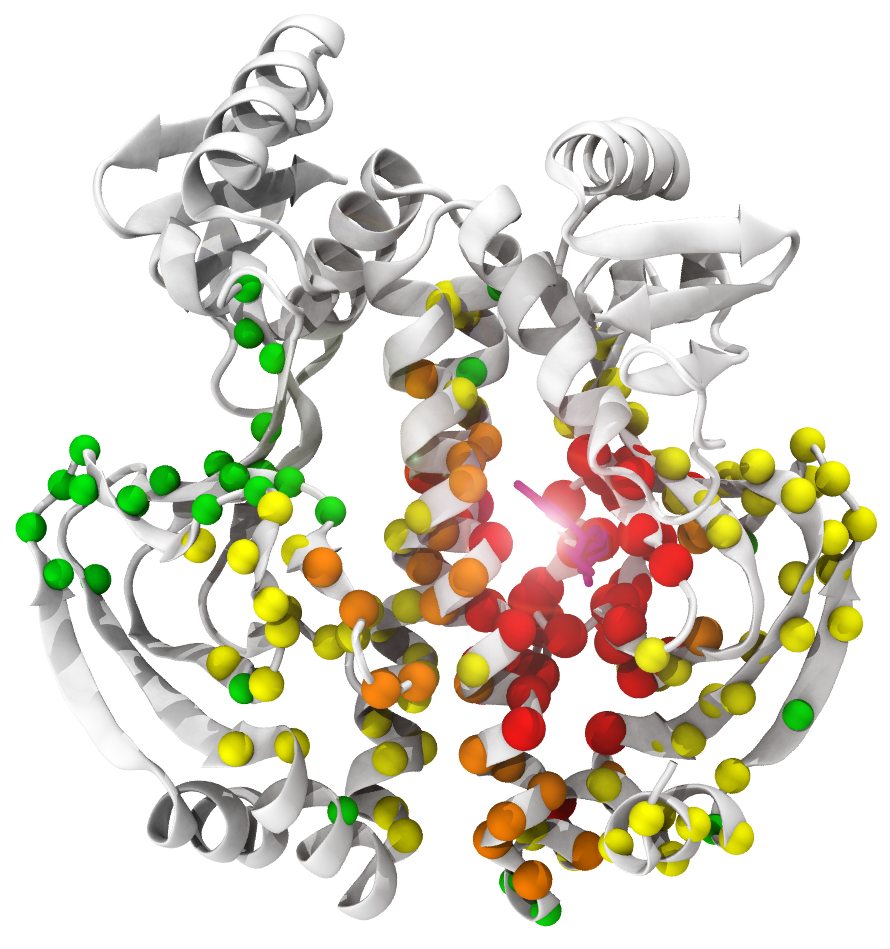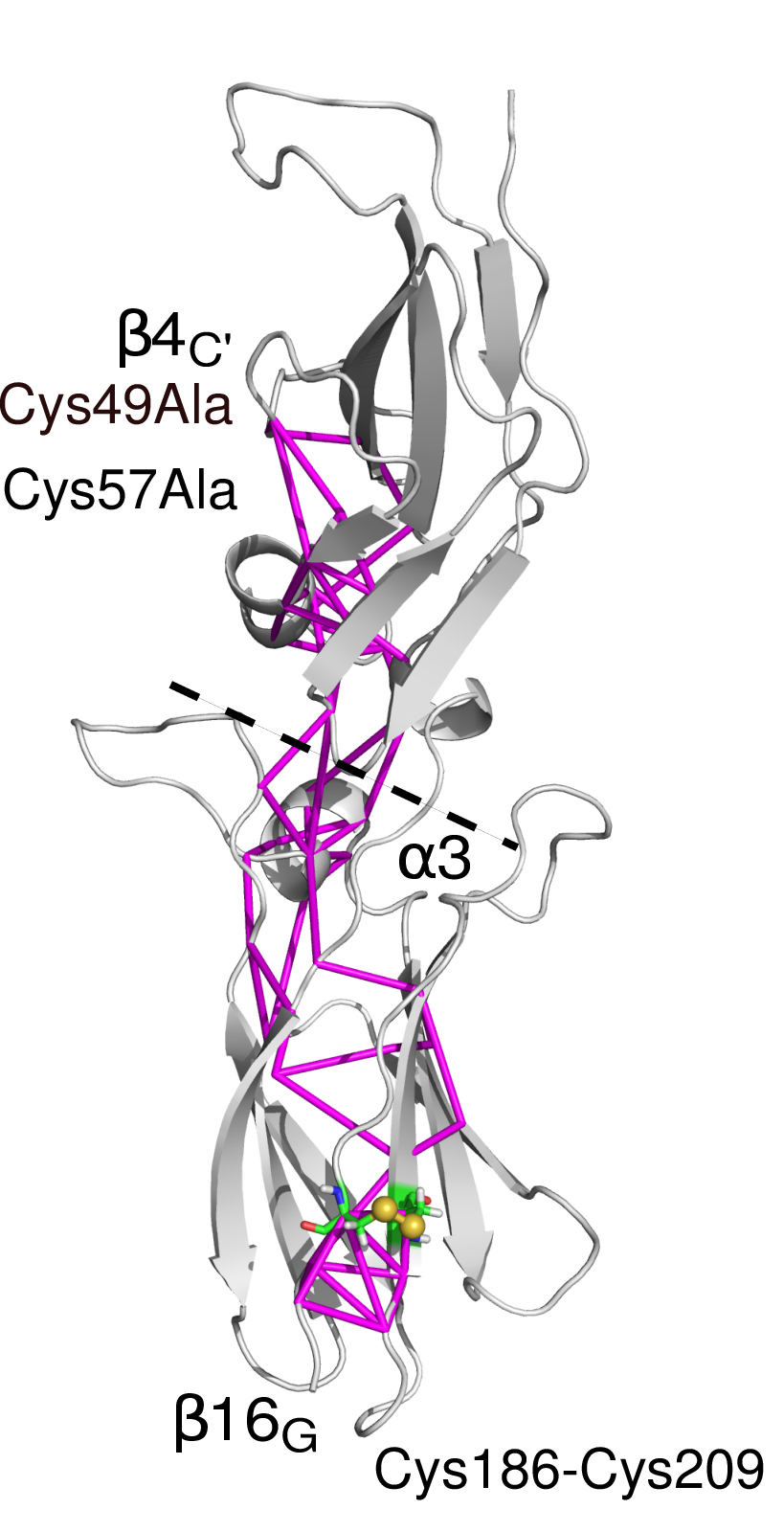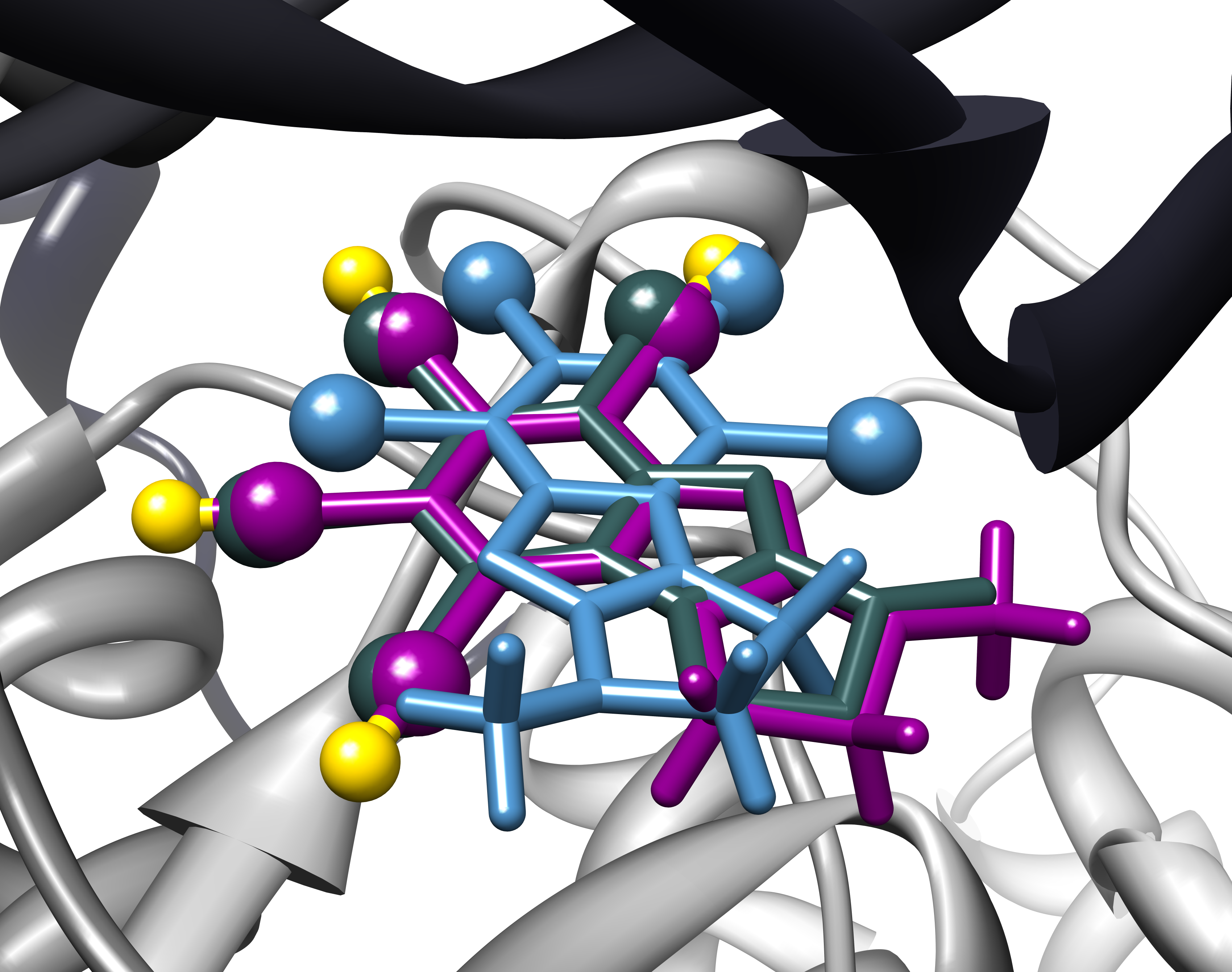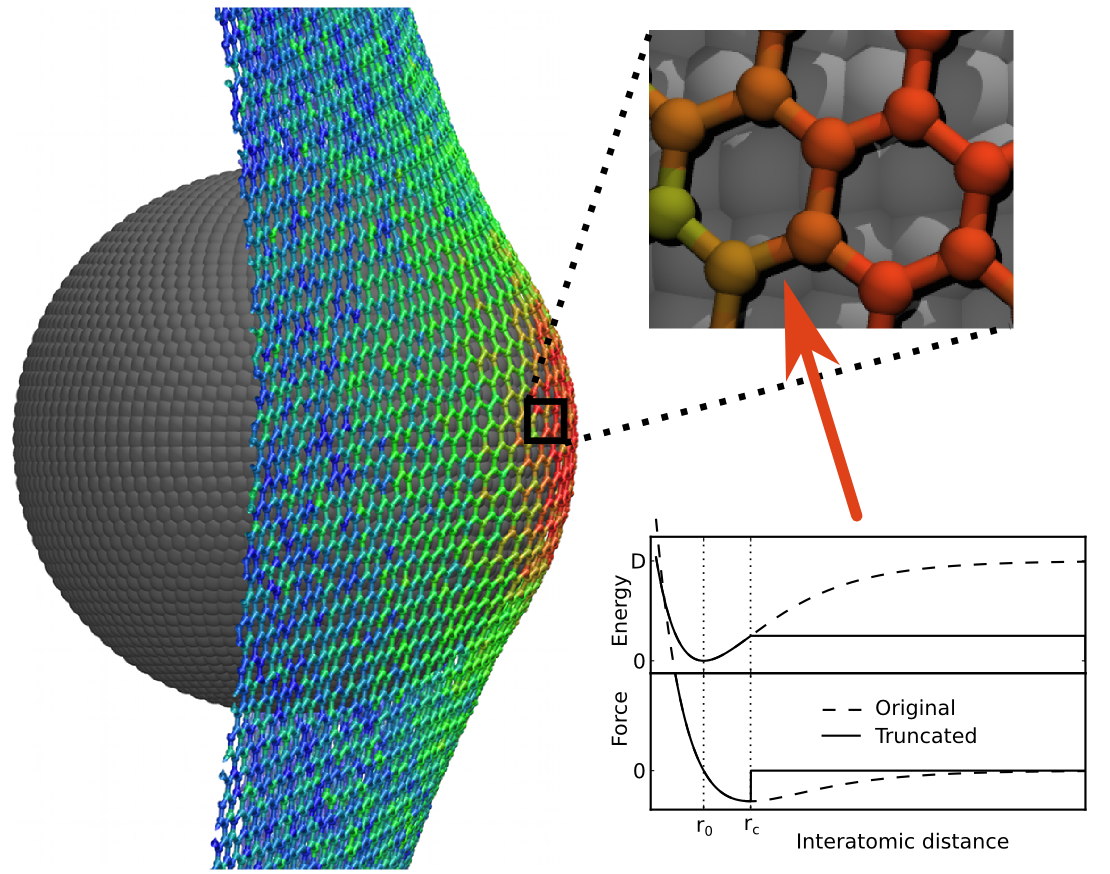Bilder und Filme
Videos
understanding our planet, our lives and ourselves. Polymers are a type of matter or substance
consisting of repeating monomers (sub-units), linked together to form extended chains. Due
to their wide range of properties, polymers play a crucial and omnipresent role in every aspect
of life. In an effort to understand their intrinsic properties, such as the amount of stress a
polymer can take before rupturing, we are simulating bulk Polystyrene under a pulling force
until breaking. By calculating the force necessary for breaking along with the stress and strain
exerted on the polymer we can calculate quantities such as the tensile strength and the
toughness of the material.
cell attachments, are simulated under mechanical force. Once the interface breaks, mechanical
signaling from the extracellular to the intracellular stops.
Santamaría, and F Gräter. Sci. Rep . 7: 9858, 2017).
C1670 disulfide bond (More info: D Butera, et al. Science Adv. 4: eaaq1477, 2018).
108: 2312-2321, 2015).
as opposed to entanglement, as shown in the video.
We apply coarse-grained Molecular Dynamics to reduce the atomistic degrees of freedom and
understand the large-scale structural organization of a PPEs.
So far, we followed the Martini 3 philosophy to obtain a coarse (orange) respresentation for the
fine (black) PPE structure., which enables us to simulate
larger PPE bulk systems on longer timescales.
Stress-induced rupture of a circular graphene sheet
The movies show the rupture of a graphene sheet upon indentation by an atomic force microscope tip.
Shown in both cases are a color-coded representation of stress due to indentation. Green represents low levels of background stress due to thermal fluctuations of the graphene atoms; orange represents high stress, delimiting the area in which the bond breaking will very probably take place.

Rupture seen from the side. MPG, 11.3 MB, 768×576 pixel
Rupture seen from the bottom MPG, 13.1 MB, 768×576 pixel
